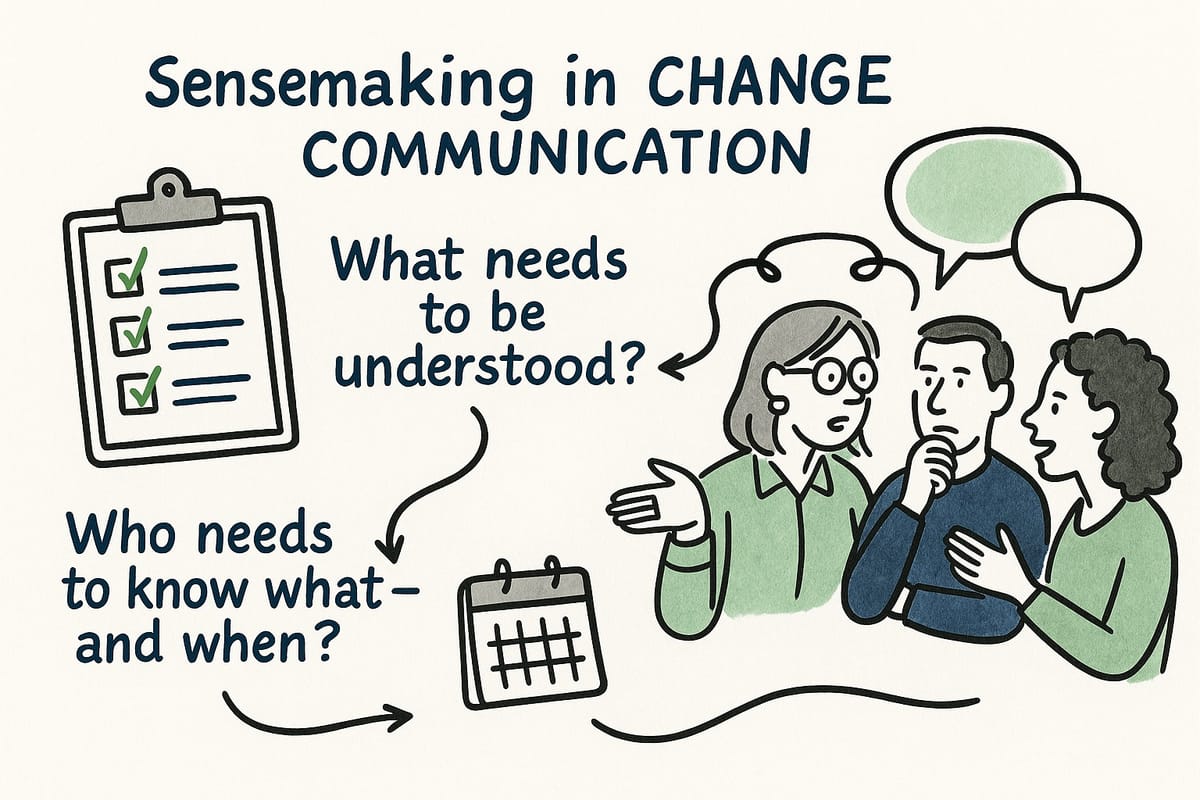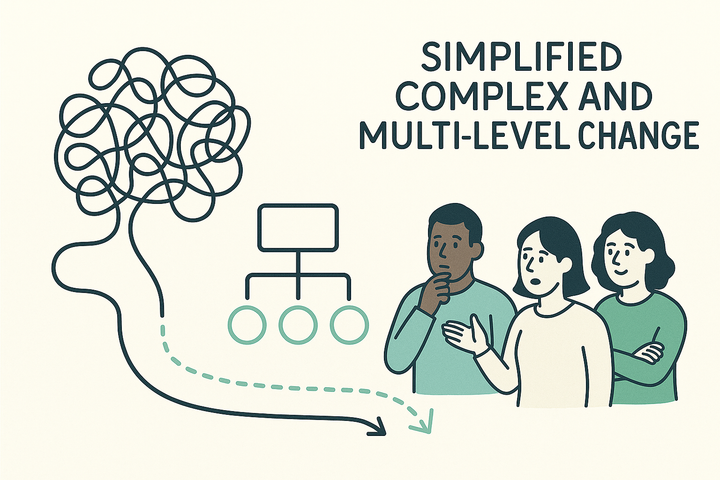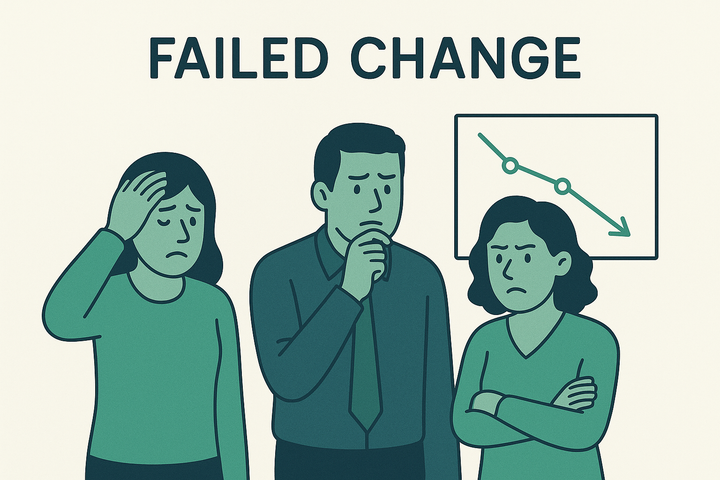Sensemaking in Change Communication
Most change comms miss the mark because they skip the first and most important question: what are we actually asking people to make sense of? Here’s how to turn confusion into clarity.

If you don’t know what people need to understand, you’re not ready to communicate.
Sensemaking is the first job of change communication—and it’s also the one that gets skipped most often. The pressure to “get the message out” can be overwhelming. But before you hit send on the slide deck, the intranet post, or the all-staff email, ask yourself this:
What is it we’re actually asking people to make sense of?
Is it a restructure? A shift in priorities? A changing role? A long, slow cultural evolution with no obvious “start date”?
Because how you communicate depends entirely on what people are being asked to understand. And most importantly—what they don’t understand yet.
Sensemaking Isn’t a Message. It’s a Process.
When change hits, people don’t just absorb the update and move on. They ask:
- What does this mean for me?
- What’s changing and what’s staying the same?
- Can I trust what I’m being told?
- Are there hidden motives here?
- Who decided this, and why?
The act of making sense is emotional, social, and iterative. It happens in kitchens, corridors, Teams chats, WhatsApps, after-hours drinks. It’s fuelled by speculation, fear, excitement, and personal context.
That’s why the job of change communication is not just to inform. It’s to shape the environment in which people make sense of what’s happening.
So, What Needs to Be Understood?
Start here. Map out the essentials:
- What is actually changing? Not just the activity or the label, but what’s different in people’s day-to-day reality.
- Why now? What’s the trigger or driver? Why is this necessary? Why here? Why us?
- What will stay the same? Don’t underestimate the power of reassurance.
- What do we know, and what’s still in play? Be transparent about the unknowns.
- Who made the decision? Show your working. People trust what they can see.
- What happens next? Even a rough map is better than a blank space.
If you can’t answer these internally, don’t expect your people to understand it externally.
Who Needs to Know What—And When?
Not everyone needs everything at once. One of the most powerful tools in your communication arsenal is sequencing.
Leaders need to know before they’re asked to deliver a message. Line managers need space to ask questions before they face their teams. Project teams need to be looped in before the FAQs hit the intranet. Stakeholders need to be primed before the politics kick off.
And timing matters. Not just when you communicate, but what else is happening around it. Is this landing the same week as another big announcement? Has the leadership just been reshuffled? Are people already stretched?
Sensemaking isn’t just about the message—it’s about the conditions in which people hear it.
You might also want to read:
- How to Communicate Change
- The Sensemaking–Alignment–Activation Model
- Sensemaking in Change Communication
- Creating True Alignment for Organisational Change
- Activating Behaviour During Change
Three Ways to Strengthen Sensemaking
- Use narrative, not noise. Don’t just list what’s happening—tell the story. Help people see the bigger picture, and their place in it.
- Be honest about uncertainty. Acknowledge what’s still unknown. If people sense you’re hiding something, they’ll write their own story—and it won’t be generous.
- Support interpretation, not just transmission. Equip leaders and managers to have real conversations. Give them prompts, talking points, space for questions—not just a pack and a script.
If You Only Remember One Thing…
Change doesn’t begin with a message. It begins with meaning.
And people can’t support what they don’t understand.
Not Sure If People Really Get It?
Start with the Sound & Signal Review. It’s our straight-talking diagnostic that shows you what’s landing, what’s missing, and what’s actually needed to cut through the noise.
Or, if the change is already underway and confusion is spreading fast, the Rapid Action Accelerator can help you reset, realign and rebuild momentum—fast.



